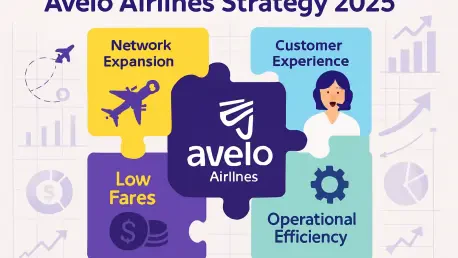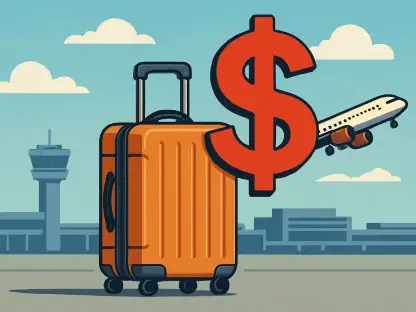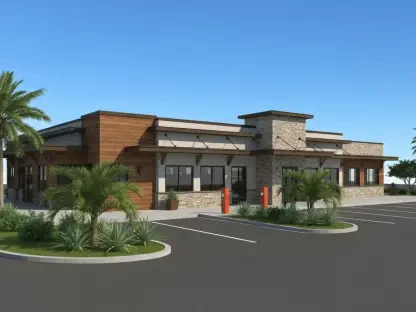Welcome to an insightful conversation with Katarina Railko, a renowned expert in hospitality, travel, and tourism. With her extensive background in the industry and a keen eye for trends in entertainment and events, Katarina offers a unique perspective on the evolving landscape of aviation. Today, we’re diving into the strategic moves of Avelo Airlines as they gear up for 2025, exploring their focus on major hubs, fleet expansion, and capacity adjustments. We’ll also unpack the reasoning behind their route changes and what these shifts mean for the airline’s future in the competitive low-cost carrier market.
Can you walk us through Avelo Airlines’ overarching strategy for 2025 and what’s shaping their direction?
I’m glad to break this down. Avelo Airlines is clearly aiming to optimize their operations by prioritizing high-demand markets in 2025. Their strategy revolves around strengthening their presence in larger, busier airports while scaling back on smaller, less profitable ones. This pivot is driven by the need to capture more market share in key urban centers where passenger volumes are higher and competition is fiercer. It’s a calculated move to boost revenue by tapping into major travel corridors, ensuring they’re not spreading resources too thin across underperforming routes.
What’s behind their decision to shift focus toward bigger airports, and how do you see this impacting their brand?
The shift to larger hubs like Chicago O’Hare and Dallas/Fort Worth is all about economics and visibility. These airports offer access to a bigger pool of passengers and better connectivity, which can drive ticket sales and improve operational efficiency. It also positions Avelo as a more prominent player in the low-cost carrier space, competing directly with bigger airlines. However, this move might mean redefining their brand a bit—moving away from being the niche carrier for underserved markets to a more mainstream option. It’s a bold step, but it comes with the challenge of standing out in crowded markets.
How does Avelo balance this growth in major hubs with maintaining service in other regions?
Balancing growth in major hubs with service in smaller regions is tricky, but Avelo seems to be taking a pragmatic approach. They’re not completely abandoning smaller markets—Tweed New Haven, for instance, remains their core hub with a significant number of routes. What they’re doing is trimming the fat, cutting airports like Boise and Savannah where demand hasn’t met expectations. This allows them to redirect resources to high-growth areas while still keeping a foothold in select smaller bases that align with their low-cost model. It’s about strategic focus rather than overextending themselves.
With Avelo’s fleet now at 22 aircraft, including a recent addition in July 2025, can you explain how this expansion supports their goals?
Expanding the fleet to 22 aircraft, with the addition of a Boeing 737-800 in July 2025, is a clear signal of Avelo’s intent to scale up capacity in targeted markets. This ex-Gol aircraft helps them meet rising demand in their growing hubs by adding more seats and flexibility to their schedule. It’s not just about having more planes—it’s about deploying them where they’ll have the most impact, like in Nashville or Dallas/Fort Worth. This move also shows they’re willing to invest in growth, even if incrementally, to keep pace with competitors.
Given the fleet’s average age is over 15 years, how sustainable is this approach, and are there hints of newer aircraft on the horizon?
The age of Avelo’s fleet—averaging over 15 years for the 737-800s and even older for the 737-700s—does raise questions about long-term sustainability. Older planes can mean higher maintenance costs and less fuel efficiency, which cuts into profitability. That said, these aircraft are still meeting current demand, and Avelo seems focused on maximizing their use for now. There’s no public indication of newer planes joining the fleet soon, but if they continue to grow, I’d expect them to start looking at more modern options to stay competitive and reduce operational costs over time.
Avelo’s seat capacity for September 2025 is down by 4% compared to last year. What factors are driving this reduction?
The 4% drop in seat capacity for September 2025 reflects Avelo’s strategic pruning of underperforming routes and airports. They’ve cut back on places like Orlando International and dropped smaller markets altogether, which naturally reduces overall seats. This isn’t necessarily a sign of weakness—it’s more about reallocating capacity to where it’s most profitable. Unlike the broader US market, which saw a slight 1% growth, Avelo is focusing on quality over quantity, ensuring they’re not flying half-empty planes in low-demand areas.
How does Nashville’s massive 400% capacity increase fit into Avelo’s broader vision, and what’s driving this growth?
Nashville’s 400% capacity jump is a standout in Avelo’s 2025 plan, going from just one route to five and offering over 20,000 seats in September. This growth is fueled by the city’s booming status as a travel and entertainment hub—think music, tourism, and business travelers. Avelo likely sees an opportunity to capture leisure and visiting-friends-and-relatives traffic in a market that’s underserved by low-cost carriers. It fits into their broader vision of targeting high-growth, high-demand areas, positioning Nashville as a key piece of their expansion puzzle.
On the flip side, why has Orlando International seen a 25% capacity drop, and what does the shift to nearby Lakeland tell us about their strategy?
The 25% capacity reduction at Orlando International, dropping it to ninth in Avelo’s network, is tied to a deliberate shift in focus toward nearby Lakeland, where demand appears to be stronger. Orlando’s drop comes from reduced frequencies rather than outright route cuts, suggesting Avelo is fine-tuning rather than abandoning the market. Lakeland, being less congested and potentially more cost-effective, offers a chance to serve a similar customer base with lower operational hurdles. It shows Avelo’s willingness to adapt quickly, prioritizing efficiency and profitability over sticking to traditional big-name airports.
What’s your forecast for Avelo Airlines’ growth trajectory in the coming years, especially with these strategic shifts?
Looking ahead, I think Avelo’s trajectory will hinge on how well they execute this pivot to major hubs while maintaining their low-cost identity. If they can successfully build a loyal customer base in places like Nashville and Chicago O’Hare, they could carve out a solid niche among budget travelers in competitive markets. However, they’ll need to address fleet aging and operational costs to sustain profitability. I foresee moderate growth in the next few years, provided they balance expansion with efficiency, and perhaps we’ll see them explore newer aircraft or partnerships to strengthen their position against rivals.









